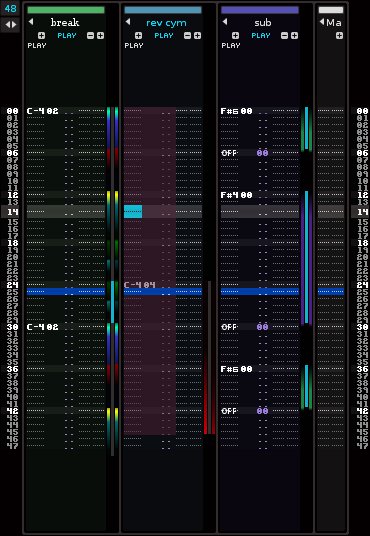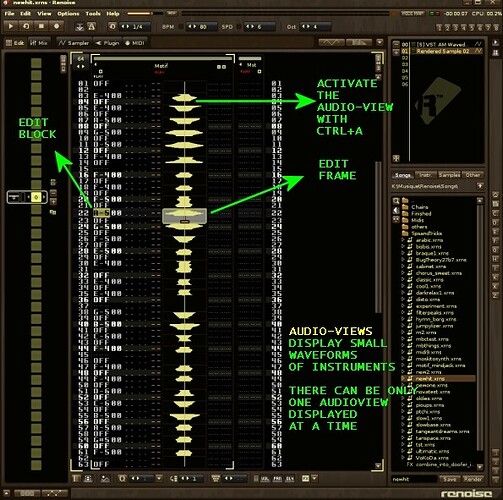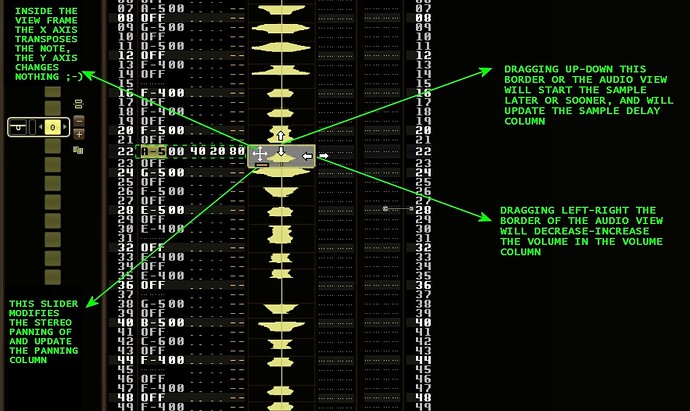I actually like some of the versions where the audio track is an integral part of a channel with note data. It is something that would make a lot of sense for people that would use the audio tracks for the purpose of freezing channels or recording external synths, and it would be a great solution for either of these situations.
I was thinking if you wanted an audio-track only channel, it could work in the same way as any other channel, but just with the notedata part minimized out. That way, there would be no difference between regular channels with no audio tracks, pure audio track channels, and integrated notedata/audio-track channels, they would just have different functionality turned on or off.
Edit: I was thinking about how audio tracks would work, and I wonder if they would still fit in with the tracker paradigm or work as a sort of meta thing. I have experimented with using the “render to sample” to record things on the Line-in DSP, and then turning on autoseek and playing back that sample in a different channel to make faux-audio tracks. It’s a huge hassle. My question though is if the audio tracks would be something you can reference from the sample bank or if they would remain as a meta sort of thing that can’t really be touched by the pattern editor. While the latter makes more sense, you would lose some of the granularity you get with working with samples in a tracker. Like, say you want to pitch slide whatever is being played by the current audio track for some reason. I reckon the sample bank and audio tracks would have to be separate things by necessity. :-/
I was also thinking, what if they integrated the line-in device with the very first part of the track DSP section, a record/arm section and a line-in/freeze selector at the beginning of the DSP chain. The pattern editor would work like a regular tracker channel unless these options were to be selected in the DSP chain section.






